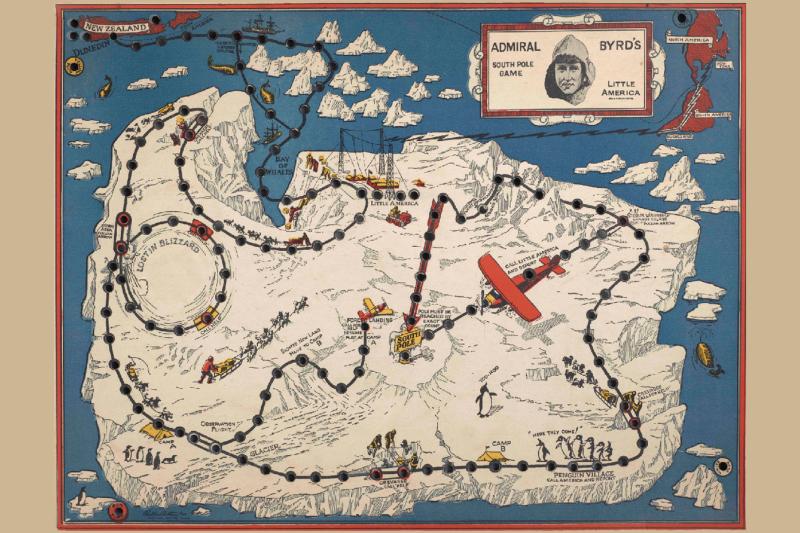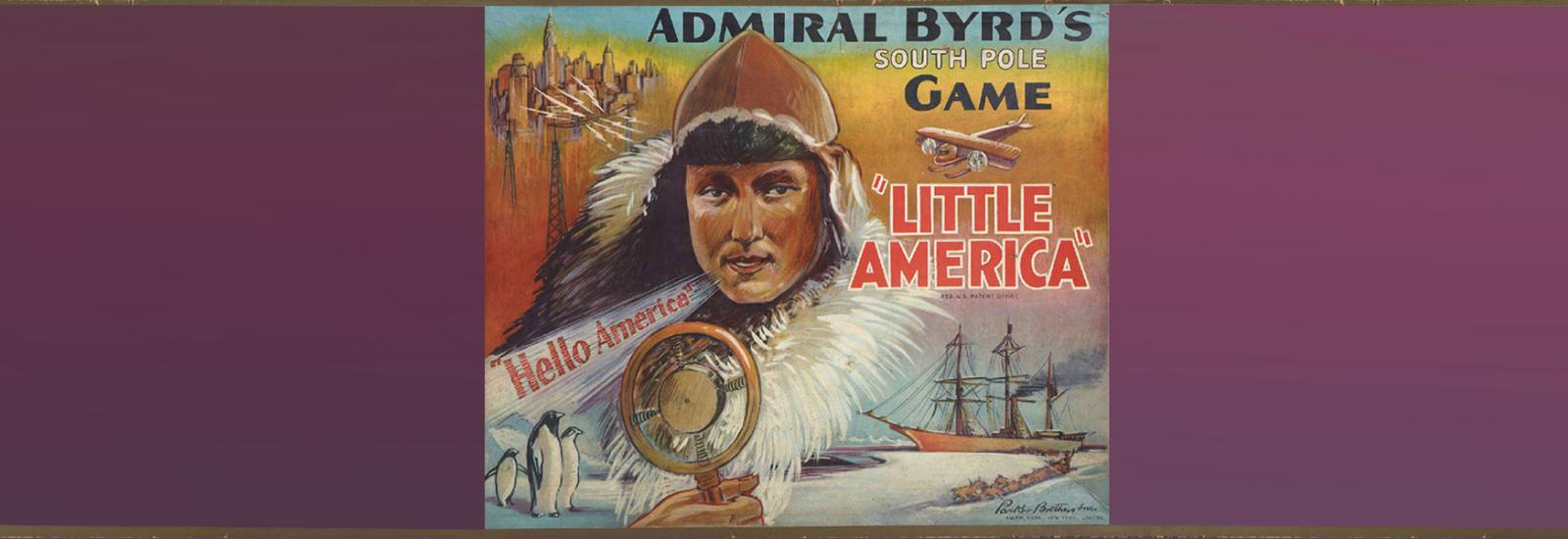— HISTORY CORNER —
Who Wanted to Play a Board Game About Antarctic Expeditions?
Historically, polar explorers generated much interest in their adventures – so much so that they dominated the newspapers and pop culture of the day. When these polar explorers returned from faraway places, they went on lecture tours and wrote books about their experiences, which only expanded their popularity. Their adventures were accessible to the masses and they became heroes in the eyes of their adoring public.
The collections of the Polar Archives are rich in materials that document the history of polar exploration, and help us to understand the social impacts of the early explorers’ achievements. In 1933, Parker Brothers entered into an agreement with explorer Richard E. Byrd to produce Admiral Byrd’s South Pole Game “Little America.” Players could follow the explorer from New Zealand to the South Pole while avoiding icebergs, crevasses and blizzards. A drawing of Admiral Byrd in his fur parka, speaking to America from Little America – his base in Antarctica – via radio, is on the box lid.
The game was a good seller in the beginning, selling 14,230 copies in 1934. Byrd received royalties of .025 per game. However, sales of the game steadily declined, and by 1940, only 510 copies were sold. Parker Brothers discontinued production of the game in 1946.
Written by Laura Kissel, Polar Curator, and Lynn Lay, Goldthwait Polar Librarian



